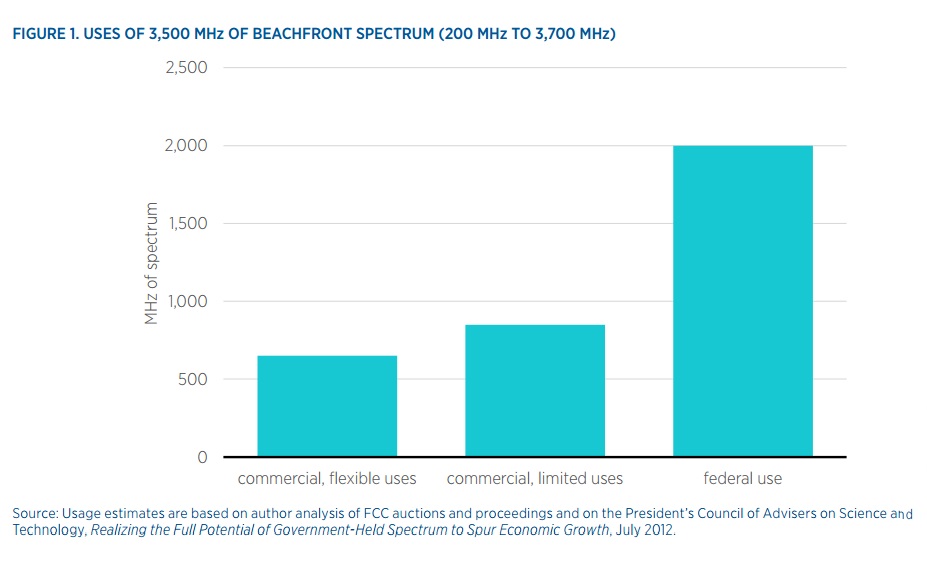US telecommunications laws are in need of updates. US law states that “the Internet and other interactive computer services” should be “unfettered by Federal or State regulation,” but regulators are increasingly imposing old laws and regulations onto new media and Internet services. Further, Federal Communications Commission actions often duplicate or displace general competition laws. Absent congressional action, old telecom laws will continue to delay and obstruct new services. A new Mercatus paper by Roslyn Layton and Joe Kane shows how governments can modernize telecom agencies and laws.
Legacy Laws
US telecom laws are codified in Title 47 of the US Code and enforced mostly by the FCC. That the first eight sections of US telecommunications law are devoted to the telegraph, the killer app of 1850, illustrates congressional inaction towards obsolete regulations.
In the last decade, therefore, several media, Internet, and telecom companies inadvertently stumbled into Communications Act quagmires. An Internet streaming company, for instance, was bankrupted for upending the TV status quo established by the FCC in the 1960s; FCC precedents mean broadcasters can be credibly threatened with license revocation for airing a documentary critical of a presidential candidate; and the thousands of Internet service providers across the US are subjected to laws designed to constrain the 1930s AT&T long-distance phone monopoly.
US telecom and tech laws, in other words, are a shining example of American “kludgeocracy”–a regime of prescriptive and dated laws whose complexity benefits special interests and harms innovators. These anti-consumer results led progressive Harvard professor Lawrence Lessig to conclude in 2008 that “it’s time to demolish the FCC.” While Lessig’s proposal goes too far, Congress should listen to the voices on the right and left urging them to sweep away the regulations of the past and rationalize telecom law for the 21st century.
Modern Telecom Policy in Denmark
An interesting new Mercatus working paper explains how Denmark took up that challenge. The paper, “Alternative Approaches to Broadband Policy: Lessons on Deregulation from Denmark,” is by Denmark-based scholar Roslyn Layton, who served on President Trump’s transition team for telecom policy, and Joe Kane, a masters student in the GMU econ department.
The “Nordic model” is often caricatured by American conservatives (and progressives like Bernie Sanders) as socialist control of industry. But as AEI’s James Pethokoukis and others point out, it’s time both sides updated their 1970s talking points. “[W]hen it comes to regulatory efficiency and business freedom,” Tyler Cowen recently noted, “Denmark has a considerably higher [Heritage Foundation] score than does the U.S.”
Layton and Kane explore Denmark’s relatively free-market telecom policies. They explain how Denmark modernized its telecom laws over time as technology and competition evolved. Critically, the center-left government eliminated Denmark’s telecom regulator in 2011 in light of the “convergence” of services to the Internet. Scholars noted,
Nobody seemed to care much—except for the staff who needed to move to other authorities and a few people especially interested in IT and telecom regulation.
Even-handed, light telecom regulation performs pretty well. Denmark, along with South Korea, leads the world in terms of broadband access. The country also has a modest universal service program that depends primarily on the market. Further, similar to other Nordic countries, Denmark permitted a voluntary forum, including consumer groups, ISPs, and Google, to determine best practices and resolve “net neutrality” controversies.
Contrast Denmark’s tech-neutral, consumer-focused approach with recent proceedings in the United States. One of the Obama FCC’s major projects was attempting to regulate how TV streaming apps functioned–despite the fact that TV has never been more abundant and competitive. Countless hours of staff time and industry time were wasted (Trump’s election killed the effort) because advocates saw the opportunity to regulate the streaming market with a law intended to help Circuit City (RIP) sell a few more devices in 1996. The biggest waste of government resources has been the “net neutrality” fight, which stems from prior FCC attempts to apply 1930s telecom laws to 1960s computer systems. Old rules haphazardly imposed on new technologies creates a compliance mindset in our tech and telecom industries. Worse, these unwinnable fights over legal minutiae prevent FCC staff from working on issues where they can help consumers.
Americans deserve better telecom laws but the inscrutability of FCC actions means consumers don’t know what to ask for. Layton and Kane illuminate that alternative frameworks are available. They highlight Denmark’s political and cultural differences from the US. Nevertheless, Denmark’s telecom reforms and pro-consumer policies deserve study and emulation. The Danes have shown how tech-neutral, consumer-focused policies not only can expand broadband access, they reduce government duplication and overreach.
 As the Industrial Revolution revealed, leaps in economic and human growth cannot be planned. They arise from societies that reward risk takers and legal systems that accommodate change. Our ability to achieve progress is directly proportional to our willingness to embrace and benefit from technological innovation, and it is a direct result of getting public policies right.
As the Industrial Revolution revealed, leaps in economic and human growth cannot be planned. They arise from societies that reward risk takers and legal systems that accommodate change. Our ability to achieve progress is directly proportional to our willingness to embrace and benefit from technological innovation, and it is a direct result of getting public policies right.


 The Technology Liberation Front is the tech policy blog dedicated to keeping politicians' hands off the 'net and everything else related to technology.
The Technology Liberation Front is the tech policy blog dedicated to keeping politicians' hands off the 'net and everything else related to technology.